History of Indonesia
PERSISMA, Indonesia is an archipelagic country of 17,508 islands (6,000 inhabited) stretching along the equator in South East Asia. The country’s strategic sea-lane position fostered inter-island and international trade; trade has since fundamentally shaped Indonesian history. The area of Indonesia is populated by peoples of various migrations, creating a diversity of cultures, ethnicities, and languages. The archipelago’s landforms and climate significantly influenced agriculture and trade, and the formation of states.
Fossilised remains of Homo erectus, popularly known as the “Java Man”, suggest the Indonesian archipelago was inhabited two million to 500,000 years ago. Austronesian people, who form the majority of the modern population, were originally from Taiwan and arrived in Indonesia around 2000 BCE.
The theories presented above could be refuted and in need of revision due to new scientific evidence presented by HUGO (Human Genome Organization) through genetic studies of the Asian races that points to a single Asian migration from South East Asia traveling northwards and slowly populating East Asia instead of the other way around which as popularly depicted above. From the scientific discovery which has been a silent evidence, it has pointed out that the South East Asian civilizations are a of much older civilization compared to the widely researched and well documented East Asians’ ancient civilizations.
From the 7th century CE, the powerful Srivijaya naval kingdom flourished bringing Hindu and Buddhist influences with it. The agricultural Buddhist Sailendra and Hindu Mataram dynasties subsequently thrived and declined in inland Java. The last significant non-Muslim kingdom, the Hindu Majapahit kingdom, flourished from the late 13th century, and its influence stretched over much of Indonesia. The earliest evidence of Islamised populations in Indonesia dates to the 13th century in northern Sumatra; other Indonesian areas gradually adopted Islam which became the dominant religion in Java and Sumatra by the end of the 16th century. For the most part, Islam overlaid and mixed with existing cultural and religious influences.
Europeans arrived in Indonesia from the 16th century seeking to monopolise the sources of valuable nutmeg, cloves, and cubeb pepper in Maluku. In 1602 the Dutch established the Dutch East India Company (VOC) and became the dominant European power. Following bankruptcy, the VOC was formally dissolved in 1800, and the government of the Netherlands established the Dutch East Indies as a nationalised colony. By the early 20th century Dutch dominance extended to what was to become Indonesia’s current boundaries. The Japanese invasion and subsequent occupation during WWII ended Dutch rule, and encouraged the previously suppressed Indonesian independence movement. Two days after the surrender of Japan in August 1945, nationalist leader, Sukarno, declared independence and was appointed president. The Netherlands tried to reestablish their rule, but a bitter armed and diplomatic struggle ended in December 1949, when in the face of international pressure, the Dutch formally recognised Indonesian independence.
An attempted coup in 1965 led to a violent army-led anti-communist purge in which over half a million people were killed. General Suharto politically out-manoeuvred President Sukarno, and was formally appointed president in March 1968. His New Order administration garnered the favour of the West whose investment in Indonesia was a major factor in the subsequent three decades of substantial economic growth. In the late 1990s, however, Indonesia was the country hardest hit by the East Asian Financial Crisis which led to popular protests and Suharto’s resignation on 21 May 1998. The Reformasi era following Suharto’s resignation, has led to a strengthening of democratic processes, including a regional autonomy program, the secession of East Timor, and the first direct presidential election in 2004. Political and economic instability, social unrest, corruption, natural disasters, and terrorism have slowed progress. Although relations among different religious and ethnic groups are largely harmonious, acute sectarian discontent and violence remain problems in some areas.
Prehistory
Geologically the area of modern Indonesia appeared sometime around the Pleistocene period, when it was still linked with the Asian mainland. The archipelago formed during the thaw after the latest ice age. Fossilised remains of Homo erectus, popularly known as the “Java Man”, suggest the Indonesian archipelago was inhabited two million to 500,000 years ago. Homo sapiens reached the region by around 45,000 years ago. Recent discoveries on the island of Flores were dubbed “Flores Man” (Homo floresiensis), a miniature hominoid that grew only three feet tall, although whether this constitutes a separate species is still in dispute. Flores Man seems to have shared some islands with Java Man until only 10,000 years ago, when they became extinct.
Austronesian people form the majority of the modern population. They may have arrived in Indonesia around 2000 BCE. Dong Son culture spread to Indonesia bringing with it techniques of wet-field rice cultivation, ritual buffalo sacrifice, bronze casting, megalithic practises, and ikat weaving methods. Some of these practices remain in areas including the Batak areas of Sumatra, Toraja in Sulawesi, and several islands in Nusa Tenggara. Early Indonesians were animists who honoured the spirits of the dead as their souls or life force could still help the living.
Ideal agricultural conditions, and the mastering of wet-field rice cultivation as early as the 8th century BCE, allowed villages, towns, and small kingdoms to flourish by the 1st century CE. These kingdoms (little more than collections of villages subservient to petty chieftains) evolved with their own ethnic and tribal religions. Java’s hot and even temperature, abundant rain and volcanic soil, was perfect for wet rice cultivation. Such agriculture required a well organised society in contrast to dry-field rice which is a much simpler form of cultivation that doesn’t require an elaborate social structure to support it.
Hindu-Buddhist civilizations
Early kingdoms
1600-year-old stone inscription from the era of Purnawarman, king of Tarumanagara, founded in Tugu sub-district of Jakarta.
References to the Dvipantara or Jawa Dwipa Hindu kingdom in Java and Sumatra appear in Sanskrit writings from 200 BCE.[citation needed] The earliest archeological relic discovered in Indonesia is from the Ujung Kulon National Park, West Java, where an early Hindu statue of Ganesha from the 1st century CE was found on the summit of Mount Raksa in Panaitan Island. There is also archeological evidence of a kingdom in Sunda territory in West Java dating from the 2nd century, and according to Dr Tony Djubiantono, the head of Bandung Archeology Agency, Jiwa Temple in Batujaya, Karawang, West Java was also built around this time.
A number of Hindu and Buddhist states flourished and then declined across Indonesia. By the time of the European Renaissance, Java and Sumatra had already seen over a millennium of civilization and two major empires. One such early kingdom was Tarumanagara, which flourished between 358 and 669 CE. Located in West Java close to modern-day Jakarta, its fifth-century king, Purnawarman, established the earliest known inscriptions in Java, the Ciaruteun inscription located near Bogor. On this monument, King Purnavarman inscribed his name and made an imprint of his footprints, as well as his elephant’s footprints. The accompanying inscription reads, “Here are the footprints of King Purnavarman, the heroic conqueror of the world”. This inscription is in Sanskrit and is still clear after 1500 years. Purnawarman apparently built a canal that changed the course of the Cakung River, and drained a coastal area for agriculture and settlement. In his stone inscriptions, Purnawarman associated himself with Vishnu, and Brahmins ritually secured the hydraulic project.
Three rough plinths dating from the beginning of the 4th century are found in Kutai, East Kalimantan, near Mahakam River. The plinths bear an inscription in the Pallava script of India reading “A gift to the Brahmin priests”.
The political history of Indonesian archipelago during the seventh to 11th century was dominated by Srivijaya based in Sumatra, also Sailendra that dominated central Java and constructed Borobudur, the largest Buddhist monument in the world. In fourteenth and fifteen centuries the history is not well known due to scarcity of evidence. Two major states dominated this period; Majapahit in East Java, the greatest of the pre-Islamic Indonesian states, and Malacca on the west coast of the Malay Peninsula, arguably the greatest of the Muslim trading empires.
Medang
Medang or previously known as Mataram was an Indianized kingdom based in Central Java around modern-day Yogyakarta between the 8th and 10th centuries. The centre of the kingdom was moved from Central Java to East Java by Mpu Sindok. The move may have been caused by an eruption of the volcano Mount Merapi, or a power struggle. The first king of Mataram was Sri Sanjaya and left inscriptions in stone. The monumental Hindu temple of Prambanan in the vicinity of Yogyakarta was built by Daksa. Dharmawangsa ordered the translation of the Mahabharata into Old Javanese in 996.
The kingdom collapsed into chaos at the end of Dharmawangsa’s reign under military pressure from Srivijaya. One of the last major kings of Mataram was Airlangga who reigned from 1016 until 1049. Airlangga was a son of Udayana of Bali and a relative of Dharmawangsa re-established the kingdom including Bali under the name of Kahuripan.
Srivijaya
Srivijaya was a ethnic Malay kingdom on Sumatra which influenced much of the Maritime Southeast Asia. From the 7th century CE, the powerful Srivijaya naval kingdom flourished as a result of trade and the influences of Hinduism and Buddhism that were imported with it.
As early as the first century CE Indonesian vessels made trade voyages as far as Africa. Picture: a ship carved on Borobudur, circa 800 CE.
Srivijaya was centred in the coastal trading centre of present day Palembang. Srivijaya was not a “state” in the modern sense with defined boundaries and a centralized government to which the citizens own allegiance. Rather Srivijaya was a confederacy form of society centered on a royal heartland. It was a thalassocracy and did not extend its influence far beyond the coastal areas of the islands of Southeast Asia. Trade was the driving force of Srivijaya just as it is for most societies throughout history. The Srivijayan navy controlled the trade that made its way through the Strait of Malacca.
By the 7th century, the harbors of various vassal states of Srivijaya lined both coasts of the Straits of Melaka. Around this time, Srivijaya had established suzerainty over large areas of Sumatra, western Java, and much of the Malay Peninsula. Dominating the Malacca and Sunda straits, the empire controlled both the Spice Route traffic and local trade. It remained a formidable sea power until the 13th century. This spread the ethnic Malay culture throughout Sumatra, the Malay Peninsula, and western Borneo. A stronghold of Vajrayana Buddhism, Srivijaya attracted pilgrims and scholars from other parts of Asia.
A series of Chola raids in the 11th century weakened the Srivijayan hegemony and enabled the formation of regional kingdoms based, like Kediri, on intensive agriculture rather than coastal and long distance trade. Srivijayan influence waned by the 11th century. The island was in frequent conflict with the Javanese kingdoms, first Singhasari and then Majapahit. Islam eventually made its way to the Aceh region of Sumatra, spreading its influence through contacts with Arabs and Indian traders. By the late 13th century, the kingdom of Pasai in northern Sumatra converted to Islam. At that time Srivijaya was briefly a tributary of the Khmer empire and later the Sukhothai kingdom. The last inscription dates to 1374, where a crown prince, Ananggavarman, is mentioned. Srivijaya ceased to exist by 1414, when Parameswara, the kingdom’s last prince, converted to Islam and founded the Sultanate of Malacca on the Malay peninsula.
Singhasari and Majapahit
Wringin Lawang, the split gate shows the red brick construction, and strong geometric lines of Majapahit architecture. Located at Jatipasar, Trowulan, East Java.
Despite a lack of historical evidence, it is known that Majapahit was the most dominant of Indonesia’s pre-Islamic states. The Hindu Majapahit kingdom was founded in eastern Java in the late 13th century, and under Gajah Mada it experienced what is often referred to as a “Golden Age” in Indonesian history, when its influence extended to much of southern Malay Peninsula, Borneo, Sumatra, and Bali[citation needed] from about 1293 to around 1500.
The founder of the Majapahit Empire, Kertarajasa, was the son-in-law of the ruler of the Singhasari kingdom, also based in Java. After Singhasari drove Srivijaya out of Java in 1290, the rising power of Singhasari came to the attention of Kublai Khan in China and he sent emissaries demanding tribute. Kertanagara, ruler of the Singhasari kingdom, refused to pay tribute and the Khan sent a punitive expedition which arrived off the coast of Java in 1293. By that time, a rebel from Kediri, Jayakatwang, had killed Kertanagara. The Majapahit founder allied himself with the Mongols against Jayakatwang and, once the Singhasari kingdom was destroyed, turned and forced his Mongol allies to withdraw in confusion.
Gajah Mada, an ambitious Majapahit prime minister and regent from 1331 to 1364, extended the empire’s rule to the surrounding islands. A few years after Gajah Madah’s death, the Majapahit navy captured Palembang, putting an end to the Srivijayan kingdom. Although the Majapahit rulers extended their power over other islands and destroyed neighbouring kingdoms, their focus seems to have been on controlling and gaining a larger share of the commercial trade that passed through the archipelago. About the time Majapahit was founded, Muslim traders and proselytisers began entering the area. After its peak in the 14th century, Majapahit power began to decline and was unable to control the rising power of the Sultanate of Malacca. Dates for the end of the Majapahit Empire range from 1478 to 1520. A large number of courtiers, artisans, priests, and members of the royal family moved east to the island of Bali at the end of Majapahit power.
The age of Islamic states
The spread of Islam
Although Muslim traders first traveled through South East Asia early in the Islamic era, the earliest evidence of Islamized populations in Indonesia dates to the 13th century in northern Sumatra. Although it is known that the spread of Islam began in the west of the archipelago, the fragmentary evidence does not suggest a rolling wave of conversion through adjacent areas; rather, it suggests the process was complicated and slow. The spread of Islam was driven by increasing trade links outside of the archipelago; in general, traders and the royalty of major kingdoms were the first to adopt the new religion.
Other Indonesian areas gradually adopted Islam, making it the dominant religion in Java and Sumatra by the end of the 16th century. For the most part, Islam overlaid and mixed with existing cultural and religious influences, which shaped the predominant form of Islam in Indonesia, particularly in Java. Only Bali retained a Hindu majority. In the eastern archipelago, both Christian and Islamic missionaries were active in the 16th and 17th centuries, and, currently, there are large communities of both religions on these islands.
Sultanate of Mataram
According to Javanese records, Kyai Gedhe Pamanahan became the ruler of the Mataram area in the 1570s with the support of the kingdom of Pajang to the east, near the current site of Surakarta (Solo). Pamanahan was often referred to as Kyai Gedhe Mataram after his ascension.
Pamanahan’s son, Panembahan Senapati Ingalaga, replaced his father on the throne around 1584. Under Senapati the kingdom grew substantially through regular military campaigns against Mataram’s neighbors. Shortly after his accession, for example, he conquered his father’s patrons in Pajang. The reign of Panembahan Seda ing Krapyak (c. 1601-1613), the son of Senapati, was dominated by further warfare, especially against powerful Surabaya, already a major center in East Java. The first contact between Mataram and the Dutch East India Company (VOC) occurred under Krapyak. Dutch activities at the time were limited to trading from limited coastal settlements, so their interactions with the inland Mataram kingdom were limited, although they did form an alliance against Surabaya in 1613. Krapyak died that year.
Krapyak was succeeded by his son, who is known simply as Sultan Agung (“Great Sultan”) in Javanese records. Agung was responsible for the great expansion and lasting historical legacy of Mataram due to the extensive military conquests of his long reign from 1613 to 1646.
After years of war Agung finally conquered Surabaya. The city surrounded by land and sea and starved it into submission. With Surabaya brought into the empire, the Mataram kingdom encompassed all of central and eastern Java, and Madura; only in the west did Banten and the Dutch settlement in Batavia remain outside Agung’s control. He tried repeatedly in the 1620s and 1630s to drive the Dutch from Batavia, but his armies had met their match, and he was forced to share control over Java. In 1645 he began building Imogiri, his burial place, about fifteen kilometers south of Yogyakarta. Imogiri remains the resting place of most of the royalty of Yogyakarta and Surakarta to this day.
Agung died in the spring of 1646, with his image of royal invincibility shattered by his losses to the Dutch, but he did leave behind an empire that covered most of Java and its neighboring islands. Upon taking the throne, Agung’s son Susuhunan Amangkurat I tried to bring long-term stability to Mataram’s realm, murdering local leaders that were insufficiently deferential to him, and closing ports so he alone had control over trade with the Dutch.
By the mid-1670s dissatisfaction with the king fanned into open revolt. Raden Trunajaya, a prince from Madura, lead a revolt fortified by itinerant mercenaries from Makassar that captured the king’s court at Mataram in mid-1677. The king escaped to the north coast with his eldest son, the future king Amangkurat II, leaving his younger son Pangeran Puger in Mataram. Apparently more interested in profit and revenge than in running a struggling empire, the rebel Trunajaya looted the court and withdrew to his stronghold in East Java leaving Puger in control of a weak court.
Amangkurat I died just after his expulsion, making Amangkurat II king in 1677. He too was nearly helpless, though, having fled without an army or treasury to build one. In an attempt to regain his kingdom, he made substantial concessions to the Dutch, who then went to war to reinstate him. For the Dutch, a stable Mataram empire that was deeply indebted to them would help ensure continued trade on favorable terms. They were willing to lend their military might to keep the kingdom together. Dutch forces first captured Trunajaya, then forced Puger to recognize the sovereignty of his elder brother Amangkurat II.
The Sultanate of Banten
In 1524-25, Sunan Gunung Jati from Cirebon, together with the armies of Demak Sultanate, seized the port of Banten from the Sunda kingdom, and established The Sultanate of Banten. This was accompanied by Muslim preachers and the adoption of Islam amongst the local population. At its peak in the first half of the 17th century, the Sultanate lasted from 1526 to 1813 AD. The Sultanate left many archaeological remains and historical records.
Colonial era
Beginning in the 16th century, successive waves of Europeans—the Portuguese, Spanish, Dutch and British—sought to dominate the spice trade at its sources in India and the ‘Spice Islands’ (Maluku) of Indonesia. This meant finding a way to Asia to cut out Muslim merchants who, with their Venetian outlet in the Mediterranean, monopolised spice imports to Europe. Astronomically priced at the time, spices were highly coveted not only to preserve and make poorly preserved meat palatable, but also as medicines and magic potions.
The arrival of Europeans in South East Asia is often regarded as the watershed moment in its history. Other scholars consider this view untenable, arguing that European influence during the times of the early arrivals of the sixteenth and 17th centuries was limited in both area and depth. This is in part due to Europe not being the most advanced or dynamic area of the world in the early 15th century. Rather, the major expansionist force of this time was Islam; in 1453, for example, the Ottoman Turks conquered Constantinople, while Islam continued to spread through Indonesia and the Philippines. European influence, particularly that of the Dutch, would not have its greatest impact on Indonesia until the 18th and 19th centuries.
The Portuguese
New found Portuguese expertise in navigation, ship building and weaponry allowed them to make daring expeditions of exploration and expansion. Starting with the first exploratory expeditions sent from newly conquered Malacca in 1512, the Portuguese were the first Europeans to arrive in Indonesia, and sought to dominate the sources of valuable spices and to extend the Roman Catholic church’s missionary efforts. The Portuguese turned east to Maluku and through both military conquest and alliance with local rulers, they established trading posts, forts, and missions on the islands of Ternate, Ambon, and Solor among others. The height of Portuguese missionary activities, however, came at the latter half of the 16th century. Ultimately, the Portuguese presence in Indonesia was reduced to Solor, Flores and Timor in modern day Nusa Tenggara, following defeat at the hands of indigenous Ternateans and the Dutch in Maluku, and a general failure to maintain control of trade in the region. In comparison with the original Portuguese ambition to dominate Asian trade, their influence on Indonesian culture was small: the romantic keroncong guitar ballads; a number of Indonesian words which reflect Portuguese’s role as the lingua franca of the archipelago alongside Malay; and many family names in eastern Indonesia such as da Costa, Dias, de Fretes, Gonsalves, etc. The most significant impacts of the Portuguese arrival were the disruption and disorganisation of the trade network mostly as a result of their conquest of Malacca, and the first significant plantings of Christianity in Indonesia. There have continued to be Christian communities in eastern Indonesia through to the present, which has contributed to a sense of shared interest with Europeans, particularly among the Ambonese.
Dutch East-India Company
In 1602, the Dutch parliament awarded the VOC a monopoly on trade and colonial activities in the region at a time before the company controlled any territory in Java. In 1619, the VOC conquered the West Javan city of Jayakarta, where they founded the city of Batavia (present-day Jakarta). The VOC became deeply involved in the internal politics of Java in this period, and fought in a number of wars involving the leaders of Mataram and Banten (Bantam).
The Dutch followed the Portuguese aspirations, courage, brutality and strategies but brought better organisation, weapons, ships, and superior financial backing. Although they failed to gain complete control of the Indonesian spice trade, they had much more success than the previous Portuguese efforts. They exploited the factionalisation of the small kingdoms in Java that had replaced Majapahit, establishing a permanent foothold in Java, from which grew a land-based colonial empire which became one of the world’s richest colonial possessions.
Dutch state rule
After the VOC was dissolved in 1800 following bankruptcy, and after a short British rule under Thomas Stamford Raffles, the Dutch state took over the VOC possessions in 1816. A Javanese uprising was crushed in the Java War of 1825-1830. After 1830 a system of forced cultivations and indentured labour was introduced on Java, the Cultivation System (in Dutch: cultuurstelsel). This system brought the Dutch and their Indonesian collaborators enormous wealth. The cultivation system tied peasants to their land, forcing them to work in government-owned plantations for 60 days of the year. The system was abolished in a more liberal period after 1870. In 1901 the Dutch adopted what they called the Ethical Policy, which included somewhat increased investment in indigenous education, and modest political reforms.
For most of the colonial period, Dutch control over its territories in the Indonesian archipelago was tenuous. It was only in the early 20th century, three centuries after the first Dutch trading post, that the full extent of the colonial territory was established and direct colonial rule exerted across what would become the boundaries of the modern Indonesian state. Portuguese Timor, now East Timor, remained under Portuguese rule until 1975 when it was invaded by Indonesia. The Indonesian government declared the territory an Indonesian province but relinquished it in 1999.
The emergence of Indonesia
Indonesian National Awakening
In October 1908, the first nationalist movement was formed, Budi Utomo. On September 10, 1912, the first nationalist mass movement was formed–Sarekat Islam.[27] By December 1912, Sarakat Islam had 93,000 members. The Dutch responded after the First World War with repressive measures. The nationalist leaders came from a small group of young professionals and students, some of whom had been educated in the Netherlands. In the post–World War I era, the Indonesian communists who were associated with the Third International started to usurp the nationalist movement. The repression of the nationalist movement led to many arrests, including Indonesia’s first president, Sukarno (1901–70), who was imprisoned for political activities on December 29, 1929. Also arrested was Mohammad Hatta, first Vice-President of Indonesia. Additionally, Sutan Sjahrir, who later became the first Prime Minister of Indonesia, was arrested on this date.
In 1914 exiled Dutch socialist Henk Sneevliet founded the Indies Social Democratic Association. Initially a small forum of Dutch socialists, it would later evolve into the Communist Party of Indonesia in 1924. In the post–World War I era, the Dutch strongly repressed all attempts at change. This repression led to a growth of the P.K.I. By December 1924, the P.K.I had a membership of 1,140. One year later in 1925, the P.K.I. had grown to 3,000 members. In 1926 thru 1927, there was a P.K.I. led revolt against the Dutch colonialism and the harsh repression based on strikes of urban workers. However, the strikes and the revolt was put down by the Dutch with some 13,000 nationalists and communists leaders arrested. Some 4,500 were given prison sentences.
Sukarno was released from prison in December 1931. However, Sukarno was re-arrested again on August 1, 1933.
Japanese occupation The Japanese invasion and subsequent occupation during WWII ended Dutch rule, and encouraged the previously suppressed Indonesian independence movement. In May 1940, early in World War II, the Netherlands was occupied by Nazi Germany. The Dutch East Indies declared a state of siege and in July redirected exports for Japan to the US and Britain. Negotiations with the Japanese aimed at securing supplies of aviation fuel collapsed in June 1941, and the Japanese started their conquest of Southeast Asia in December of that year. That same month, factions from Sumatra sought Japanese assistance for a revolt against the Dutch wartime government. The last Dutch forces were defeated by Japan in March 1942.
In July 1942, Sukarno accepted Japan’s offer to rally the public in support of the Japanese war effort. Sukarno and Mohammad Hatta were decorated by the Emperor of Japan in 1943. However, experience of the Japanese occupation of Indonesia varied considerably, depending upon where one lived and one’s social position. Many who lived in areas considered important to the war effort experienced torture, sex slavery, arbitrary arrest and execution, and other war crimes. Thousands taken away from Indonesia as war labourers (romusha) suffered or died as a result of ill-treatment and starvation. People of Dutch and mixed Dutch-Indonesian descent were particular targets of the Japanese occupation.
In March 1945 Japan organized an Indonesian committee (BPUPKI) on independence. At its first meeting in May, Supomo spoke of national integration and against personal individualism; while Muhammad Yamin suggested that the new nation should claim Sarawak, Sabah, Malaya, Portuguese Timor, and all the pre-war territories of the Dutch East Indies. The committee drafted the 1945 Constitution, which remains in force, though now much amended. On 9 August 1945 Sukarno, Hatta, and Radjiman Wediodiningrat were flown to meet Marshal Hisaichi Terauchi in Vietnam. They were told that Japan intended to announce Indonesian independence on 24 August. After the Japanese surrender however, Sukarno unilaterally proclaimed Indonesian independence on 17 August.
Indonesian National Revolution
Under pressure from radical and politicised pemuda (‘youth’) groups, Sukarno and Hatta proclaimed Indonesian independence, on 17 August 1945, two days after the Japanese Emperor’s surrender in the Pacific. The following day, the Central Indonesian National Committee (KNIP) declared Sukarno President, and Hatta Vice President. Word of the proclamation spread by shortwave and fliers while the Indonesian war-time military (PETA), youths, and others rallied in support of the new republic, often moving to take over government offices from the Japanese.
The Netherlands, initially backed by the British tried to re-establish their rule, and a bitter armed and diplomatic struggle ended in December 1949, when in the face of international pressure, the Dutch formally recognised Indonesian independence. Dutch efforts to re-establish complete control met resistance. At the end of World War II, a power vacuum arose, and the nationalists often succeeded in seizing the arms of the demoralised Japanese. A period of unrest with city guerrilla warfare called the Bersiap period ensued. Groups of Indonesian nationalists armed with improvised weapons (like bamboo spears) but also firearms attacked returning Allied troops. 3500 Europeans were killed and 20000 were missing, meaning more European deaths in Indonesia after the war than during the war. After returning to Java, Dutch forces quickly re-occupied the colonial capital of Batavia (now Jakarta), so the city of Yogyakarta in central Java became the capital of the nationalist forces. Negotiations with the nationalists led to two major truce agreements, but disputes about their implementation, and much mutual provocation, led each time to renewed conflict. Within four years the Dutch had recaptured almost the whole of Indonesia, but guerrilla resistance, led on Java by commander Nasution persisted. On 27 December 1949, after four years of sporadic warfare and fierce criticism of the Dutch by the United Nations, the Netherlands officially recognised Indonesian sovereignty under the federal structure of the United States of Indonesia (RUSI). On 17 August 1950, exactly five years after the proclamation of independence, the last of the federal states were dissolved and Sukarno proclaimed a single unitary Republic of Indonesia.
Sukarno’s presidency
Democratic experiment
With the unifying struggle to secure Indonesia’s independence over, divisions in Indonesian society began to appear. These included regional differences in customs, religion, the impact of Christianity and Marxism, and fears of Javanese political domination. Following colonial rule, Japanese occupation, and war against the Dutch, the new country suffered from severe poverty, a ruinous economy, low educational and skills levels, and authoritarian traditions. Challenges to the authority of the Republic included the militant Darul Islam who waged a guerrilla struggle against the Republic from 1948 to 1962; the declaration of an independent Republic of South Maluku by Ambonese formerly of the Royal Dutch Indies Army; and rebellions in Sumatra and Sulawesi between 1955 and 1961.
In contrast to the 1945 Constitution, the 1950 constitution mandated a parliamentary system of government, an executive responsible to the parliament, and stipulated at length constitutional guarantees for human rights, drawing heavily on the 1948 United Nations Universal Declaration of Human Rights. A proliferation of political parties dealing for shares of cabinet seats resulted in a rapid turnover of coalition governments including 17 cabinets between 1945 and 1958. The long-postponed parliamentary elections were held in 1955; the Indonesian National Party (PNI)—considered Sukarno’s party—topped the poll, and the Communist Party of Indonesia (PKI) received strong support, but no party garnered more than a quarter of the votes, which resulted in short-lived coalitions.
Guided Democracy
By 1956, Sukarno was openly criticising parliamentary democracy, stating that it was “based upon inherent conflict” which ran counter to Indonesian notions of harmony as being the natural state human relationships. Instead, he sought a system based on the traditional village system of discussion and consensus, under the guidance of village elders. He proposed a threefold blend of nasionalisme (‘nationalism’), agama (‘religion’), and komunisme (‘communism’) into a co-operative ‘Nas-A-Kom’ government. This was intended to appease the three main factions in Indonesian politics — the army, Islamic groups, and the communists. With the support of the military, he proclaimed in February 1957, ‘Guided Democracy’, and proposed a cabinet of representing all the political parties of importance (including the PKI). The US tried and failed to secretly overthrow the President, while Secretary of State Dulles declared before Congress that “we are not interested in the internal affairs of this country.”
Sukarno abrogated the 1950 Constitution on 9 July 1959 by a decree dissolving the Constitutional Assembly and restoring the 1945 Constitution.[44] The elected parliament was replaced by one appointed by, and subject to the will of, the President. Another non-elected body, the Supreme Advisory Council, was the main policy development body, while the National Front was set up in September 1960 and presided over by the president to “mobilise the revolutionary forces of the people”. Western-style parliamentary democracy was thus finished in Indonesia until the 1999 elections of the Reformasi era.
Sukarno’s revolution and nationalism
Charismatic Sukarno spoke as a romantic revolutionary, and under his increasingly authoritarian rule, Indonesia moved on a course of stormy nationalism. Sukarno was popularly referred to as bung (“older brother”), and he painted himself as a man of the people carrying the aspirations of Indonesia and one who dared take on the West. He instigated a number of large, ideologically driven infrastructure projects and monuments celebrating Indonesia’s identity, which were criticized as substitutes for real development in a deteriorating economy.
Western New Guinea had been part of the Dutch East Indies, and Indonesian nationalists had thus claimed it on this basis. Indonesia was able to instigate a diplomatic and military confrontation with the Dutch over the territory following an Indonesian-Soviet arms agreement in 1960. It was, however, United States pressure on the Netherlands that led to an Indonesian takeover in 1963. Also in 1963, Indonesia commenced Konfrontasi with the new state of Malaysia. The northern states of Borneo, formerly British Sarawak and Sabah, had wavered in joining Malaysia, whilst Indonesia saw itself as the rightful rulers of the Malay race and supported an unsuccessful revolution attempt in Brunei. Reviving the glories of the Indonesian National Revolution, Sukarno rallied against notions of British imperialism mounting military offensives along the Indonesia-Malaysia border in Borneo. As the PKI rallied in Jakarta streets in support, the West became increasingly alarmed at Indonesian foreign policy and the United States withdrew its aid to Indonesia.
Indonesia’s economic position continued to deteriorate; by the mid-1960s, the cash-strapped government had to scrap critical public sector subsidies, inflation was at 1,000%, export revenues were shrinking, infrastructure crumbling, and factories were operating at minimal capacity with negligible investment. Severe poverty and hunger were widespread.
The New Order
Transition to the New Order
Described as the great dalang (“puppet master”), Sukarno’s position depended on balancing the opposing and increasingly hostile forces of the army and PKI. Sukarno’s anti-imperial ideology saw Indonesia increasingly dependent on Soviet and then communist China. By 1965, the PKI was the largest communist party in the world outside the Soviet Union or China. Penetrating all levels of government, the party increasingly gained influence at the expense of the army.
On September 30, 1965, six of the most senior generals within the military and other officers were executed in an attempted coup. The insurgents, known later as the 30 September Movement, backed a rival faction of the army and took up positions in the capital, later seizing control of the national radio station. They claimed they were acting against a plot organised by the generals to overthrow Sukarno. Within a few hours, Major General Suharto, commander of the Army Strategic Reserve (Kostrad), mobilised counteraction, and by the evening of 1 October, it was clear the coup, which had little coordination and was largely limited to Jakarta, had failed. Complicated and partisan theories continue to this day over the identity of the attempted coup’s organisers and their aims. According to the Indonesian army, the PKI were behind the coup and used disgruntled army officers to carry it out, and this became the official account of Suharto’s subsequent New Order administration. Most historians agree that the coup and the surrounding events were not led by a single mastermind controlling all events, and that the full truth will never likely be known.
While the PKI’s role in the events of the night of 30 September-1 October remains debated, the effects on it were devastating. The PKI was blamed for the coup, and anti-communists, initially following the army’s lead, and encouraged by Western embassies, went on a violent anti-communist purge across much of the country. The PKI was effectively destroyed, and the most widely accepted estimates are that between 500,000 and one million people were killed. The violence was especially brutal in Java and Bali. The PKI was outlawed and possibly more than 1 million of its leaders and affiliates were imprisoned.
Throughout the 1965-66 period, President Sukarno attempted to restore his political position and shift the country back to its pre-October 1965 position but his Guided Democracy balancing act was destroyed with the PKI’s destruction. Although he remained president, the weakened Sukarno was forced to transfer key political and military powers to General Suharto, who by that time had become head of the armed forces. In March 1967, the Provisional People’s Consultative Assembly (MPRS) named General Suharto acting president. Suharto was formally appointed president in March 1968. Sukarno lived under virtual house arrest until his death in 1970.
Entrenchment of the New Order
In the aftermath of Suharto’s rise, hundreds of thousands of people were killed or imprisoned by the military and religious groups in a backlash against alleged communist supporters. Suharto’s administration is commonly called the New Order era. Suharto invited major foreign investment, which produced substantial, if uneven, economic growth. However, Suharto enriched himself and his family through business dealings and widespread corruption.
Annexation of West Irian
At the time of independence, the Dutch retained control over the western half of New Guinea, and permitted steps toward self-government and a declaration of independence on December 1, 1961. After negotiations with the Dutch on the incorporation of the territory into Indonesia failed, an Indonesian paratroop invasion December 18 preceded armed clashes between Indonesian and Dutch troops in 1961 and 1962. In 1962 the United States pressured the Netherlands into secret talks with Indonesia which in August 1962 produced the New York Agreement, and Indonesia assumed administrative responsibility for West Irian on May 1, 1963.
Rejecting United Nations supervision, the Indonesian government under Suharto decided to settle the question of West Irian, the former Dutch New Guinea, in their favor. Rather than a referendum of all residents of West Irian as had been agreed under Sukarno, an “Act of Free Choice” was conducted 1969 in which 1,025 Papuan representatives of local councils were selected by the Indonesians. After training in Indonesian language they were warned to vote in favor of Indonesian integration with the group unanimously voting for integration with Indonesia. A subsequent UN General Assembly resolution confirmed the transfer of sovereignty to Indonesia.
West Irian was renamed Irian Jaya (‘glorious Irian’) in 1973. Opposition to Indonesian administration of Irian Jaya (later known as Papua) gave rise to small-scale guerrilla activity in the years following Jakarta’s assumption of control.
Annexation of East Timor
In 1975, the Carnation Revolution in Portugal caused authorities there to announce plans for decolonisation of Portuguese Timor, the eastern half of the island of Timor whose western half was a part of the Indonesian province of East Nusa Tenggara. In the elections held in 1975, Fretilin, a left-leaning party and UDT, aligned with the local elite, emerged as the largest parties, having previously formed an alliance to campaign for independence from Portugal. Apodeti, a party advocating integration with Indonesia, enjoyed little popular support.
Indonesia alleged that Fretilin was communist, and feared that an independent East Timor would influence separatism in the archipelago. Indonesian military intelligence influenced the break-up of the alliance between Fretilin and UDT, which led to a coup by the UDT on August 11, 1975, and a month-long civil war. During this time, the Portuguese government effectively abandoned the territory, and did not resume the decolonisation process. On November 28, Fretilin unilaterally declared independence, and proclaimed the ‘Democratic Republic of East Timor’. Nine days later, on December 7, Indonesia invaded East Timor, eventually annexing the tiny country of (then) 680,000 people. Indonesia was supported materially and diplomatically by the United States, Australia and the United Kingdom who regarded Indonesia as an anti-communist ally.
Following the 1998 resignation of Suharto, on August 30, 1999, the people of East Timor voted overwhelmingly for independence in a UN-sponsored referendum. About 99% of the eligible population participated; more than three quarters chose independence despite months of attacks by the Indonesian military and its militia. After the result was announced, elements of the Indonesian military and its militia retaliated by killing approximately 2,000 East Timorese, displacing two-thirds of the population, raping hundreds of women and girls, and destroying much of the country’s infrastructure. In October 1999, the Indonesian parliament (MPR) revoked the decree that annexed East Timor, and the United Nations Transitional Administration in East Timor (UNTAET) assumed responsibility for governing East Timor until it officially became an independent state in May 2002.
Transmigration
The Transmigration program (Transmigrasi) was a National Government initiative to move landless people from densely populated areas of Indonesia (such as Java and Bali) to less populous areas of the country including Papua, Kalimantan, Sumatra, and Sulawesi. The stated purpose of this program was to reduce the considerable poverty and overpopulation on Java, to provide opportunities for hard-working poor people, and to provide a workforce to better utilise the resources of the outer islands. The program, however, has been controversial with critics accusing the Indonesian Government of trying to use these migrants to reduce the proportion of native populations in receiving areas, in order to weaken separatist movements. The program has often been cited as a major and ongoing factor in controversies and even conflict and violence between settlers and indigenous populations.
Forcing out Suharto
Pro-democracy movement
In 1996 Suharto undertook efforts to pre-empt a challenge to the New Order government. The Indonesian Democratic Party (PDI), a legal party that had traditionally propped up the regime had changed direction, and began to assert its independence. Suharto fostered a split over the leadership of PDI, backing a co-opted faction loyal to deputy speaker of the People’s Representative Council Suryadi against a faction loyal to Megawati Sukarnoputri, the daughter of Sukarno and the PDI’s chairperson.
After the Suryadi faction announced a party congress to sack Megawati would be held in Medan on June 20–22, Megawati proclaimed that her supporters would hold demonstrations in protest. The Suryadi faction went through with its sacking of Megawati, and the demonstrations manifested themselves throughout Indonesia. This led to several confrontations on the streets between protesters and security forces, and recriminations over the violence. The protests culminated in the military allowing Megawati’s supporters to take over PDI headquarters in Jakarta, with a pledge of no further demonstrations.
Suharto allowed the occupation of PDI headquarters to go on for almost a month, as attentions were also on Jakarta due to a set of high-profile ASEAN meetings scheduled to take place there. Capitalizing on this, Megawati supporters organized “democracy forums” with several speakers at the site. On July 26, officers of the military, Suryadi, and Suharto openly aired their disgust with the forums.
On July 27, police, soldiers, and persons claiming to be Suryadi supporters stormed the headquarters. Several Megawati supporters were killed, and over two-hundred arrested and tried under the Anti-Subversion and Hate-Spreading laws. The day would become known as “Black Saturday” and mark the beginning of a renewed crackdown by the New Order government against supporters of democracy, now called the “Reformasi” or Reformation.
Economic crisis and Suharto’s resignation
In 1997 and 1998, Indonesia was the country hardest hit by the East Asian Financial Crisis, which had dire consequences for the Indonesian economy and society, and Suharto’s presidency. At the same time, the country suffered a severe drought and some of the largest forest fires in history burned in Kalimantan and Sumatra. The rupiah, the Indonesian currency, took a sharp dive in value. Suharto came under scrutiny from international lending institutions, chiefly the World Bank, International Monetary Fund (IMF) and the United States, over longtime embezzlement of funds and some protectionist policies. In December, Suharto’s government signed a letter of intent to the IMF, pledging to enact austerity measures, including cuts to public services and removal of subsidies, in return for receiving the aid of the IMF and other donors. Prices for goods such as kerosene and rice, and fees for public services including education rose dramatically. The effects were exacerbated by widespread corruption. The austerity measures approved by Suharto had started to erode domestic confidence with the New Order and led to popular protests.
Suharto stood for re-election by parliament for the seventh time in March 1998, justifying it on the grounds of the necessity of his leadership during the crisis. The parliament approved a new term. This sparked protests and riots throughout the country, now termed the Indonesian 1998 Revolution. Dissent within the ranks of his own Golkar party and the military finally weakened Suharto, and on May 21 he stood down from power. He was replaced by his deputy Jusuf Habibie.
President Habibie quickly assembled a cabinet. One of its main tasks was to re-establish International Monetary Fund and donor community support for an economic stabilization program. He moved quickly to release political prisoners and lift some controls on freedom of speech and association. Elections for the national, provincial, and sub-provincial parliaments were held on June 7, 1999. For the national parliament, Indonesian Democratic Party-Struggle (PDI-P, led by Sukarno’s daughter Megawati Sukarnoputri) won 34% of the vote; Golkar (Suharto’s party; formerly the only legal party of government) 22%; United Development Party (PPP, led by Hamzah Haz) 12%; and National Awakening Party (PKB, led by Abdurrahman Wahid) 10%.
Politics since 1999
Indonesian 2009 election ballot, since 2004 Indonesian vote their president directly. In October 1999, the People’s Consultative Assembly (MPR), which consists of the 500-member Parliament plus 200 appointed members, elected Abdurrahman Wahid, commonly referred to as “Gus Dur” as President, and Megawati Sukarnoputri as Vice President, for 5-year terms. Wahid named his first Cabinet in early November 1999 and a reshuffled, second Cabinet in August 2000. President Wahid’s government continued to pursue democratization and to encourage renewed economic growth under challenging conditions. In addition to continuing economic malaise, his government faced regional, interethnic, and interreligious conflict, particularly in Aceh, the Maluku Islands, and Irian Jaya. In West Timor, the problems of displaced East Timorese and violence by pro-Indonesian East Timorese militias caused considerable humanitarian and social problems. An increasingly assertive Parliament frequently challenged President Wahid’s policies and prerogatives, contributing to a lively and sometimes rancorous national political debate.
During the People’s Consultative Assembly’s first annual session in August 2000, President Wahid gave an account of his government’s performance. On January 29, 2001 thousands of student protesters stormed parliament grounds and demanded that President Abdurrahman Wahid resign due to alleged involvement in corruption scandals. Under pressure from the Assembly to improve management and coordination within the government, he issued a presidential decree giving Vice President Megawati control over the day-to-day administration of government. Soon after, Megawati Sukarnoputri assumed the presidency on July 23. In 2004, Susilo Bambang Yudhoyono won Indonesia’s first direct Presidential election and in 2009 he was elected to a second term.
Source : wikipedia.org

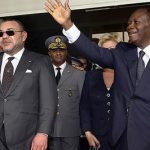
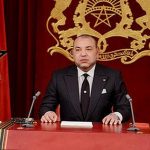




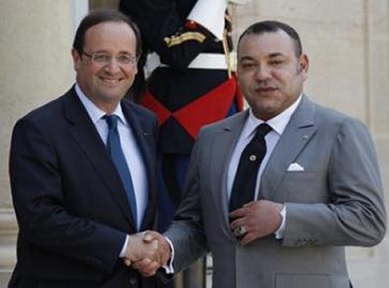
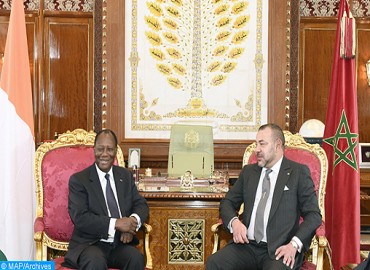

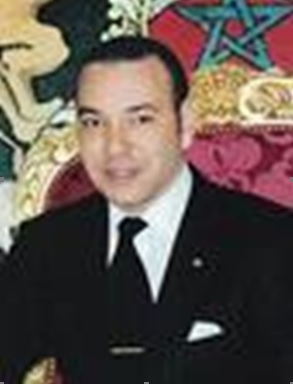

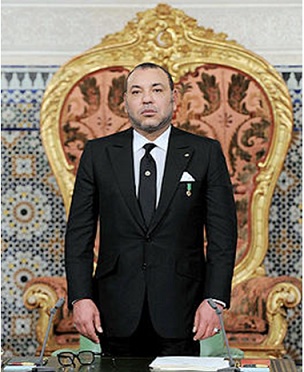




New Comments